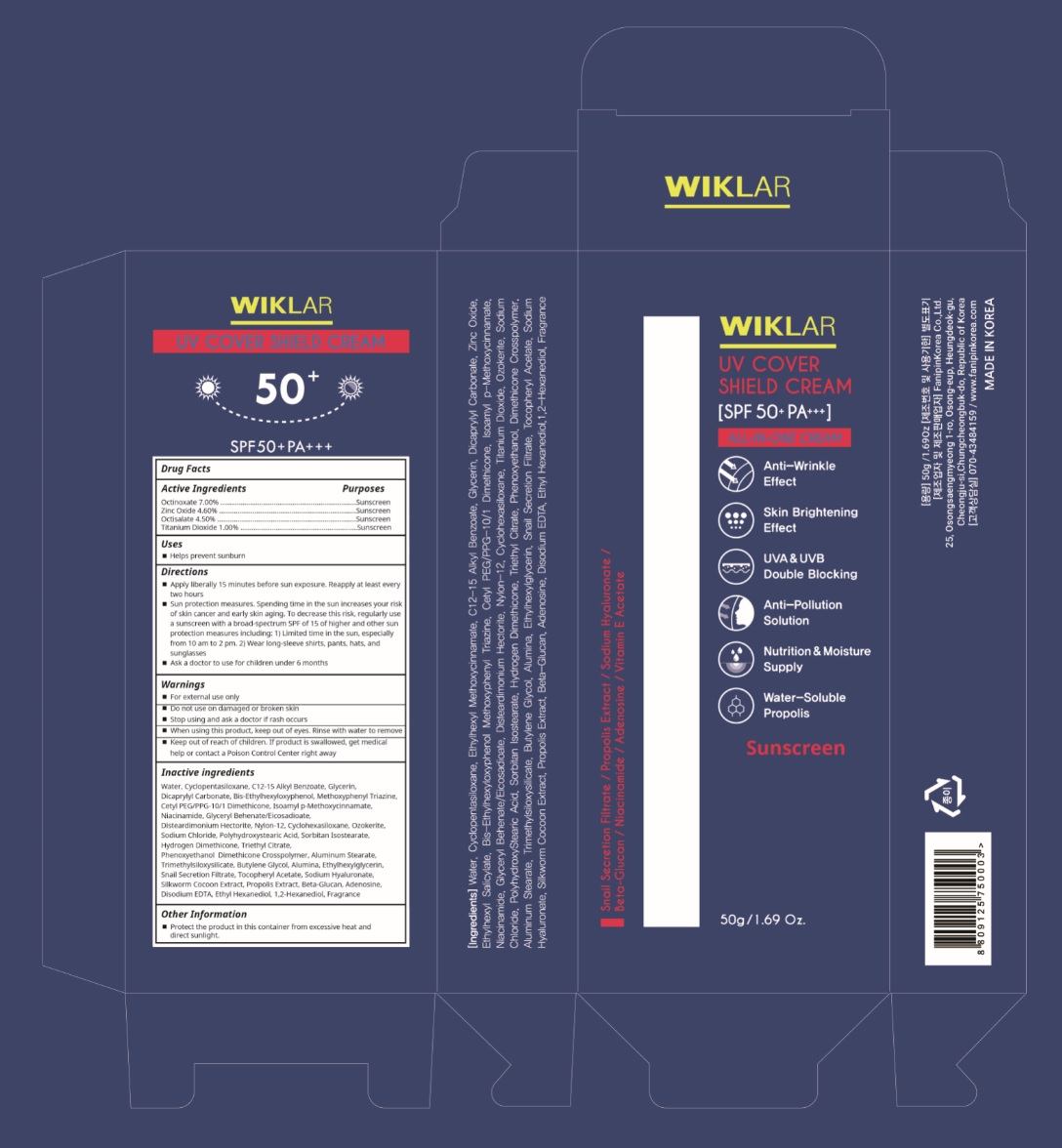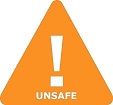Wiklar Uv Cover Shield | Octinoxate, Zinc Oxide, Octisalate, Titanium Dioxide Cream while Breastfeeding

What is Wiklar Uv Cover Shield | Octinoxate, Zinc Oxide, Octisalate, Titanium Dioxide Cream ?
Brief: Sunscreen
Can I use Wiklar Uv Cover Shield | Octinoxate, Zinc Oxide, Octisalate, Titanium Dioxide Cream while breastfeeding?

Wiklar Uv Cover Shield | Octinoxate, Zinc Oxide, Octisalate, Titanium Dioxide Cream Breastfeeding Analsys
Zinc cation while Breastfeeding
SafeCAS Number: 1314-13-2
It is used topically as an astringent and skin protector, very often together with small amounts of Ferric Oxide to form Calamine (see specific info). It is a product compatible with breastfeeding according to WHO Essential Medicine’s List - 2002.It is also used in dental hygiene products and cosmetics. Widely used for skin protection of the diaper area in infants. Because of the small dose used and poor absorption into plasma of most topical dermatological preparations, excretion into breastmilk in significant amount appears to be unlikely. Do not apply on the breast to prevent infant ingestion; otherwise, wash it off thoroughly with water before the next breast feed.
Wiklar Uv Cover Shield | Octinoxate, Zinc Oxide, Octisalate, Titanium Dioxide Cream Breastfeeding Analsys - 2
Octinoxate and Breastfeeding
UnsafeOctinoxate (Octylmethoxycinnamate) has been detected in human urine, blood and breast milk and is known for moderate risk of skin allergy. Some studies suggest that Octinoxate has estrogen like effects however less than 1% skin penetration has been found in human laboratory studies. As not much study has been done on effects of Octinoxate during breast feeding its recommended to use safe alternatives.
Octyl Methoxycinnamate (OMC) is a frequently used UV-filter in sunscreens and other cosmetics. Octinoxate can be systemically absorbed after skin application, being found in the deeper layers of the stratum corneum as well as urine, plasma, and breast milk. The mean maximum plasma concentration detected after application of 2mg/cm2 sunscreen was 7ng/mL in women and 16ng/mL in men. FDA study found blood levels 13 times above cutoff for systemic exposure.
Several studies indicated that OMC acts as an endocrine disruptor due to the ability to interfere with endocrine system at different levels. In humans OMC exposure has minor, but statistically significant effects on the levels of testosterone and estradiol. Moreover, some studies suggested that OMC can interact with the hypothalamo-pituitary-thyroid (HPT) axis.
Moreover, a study of offspring of dams treated with OMC (500�1000 mg/kg/day) showed sex-dependent behavioral changes, namely decreased motor activity in females, but not in males, and improved spatial learning in males, suggesting that OMC can affect neuronal development, however the doses used in these experiments were extremely high, not relevant to possible human exposure.
Note: Study and data for tropical use onlyWarning: High dosage shall be avoided as reproductive system, thyroid and behavioral alterations in animal studies has been found, Tropical usage in breast area shall be avoided to prevent the OCTINOXATE passing orally in Infants.
Octisalate and Breastfeeding
Low RiskOctyl salicylate is an oil soluble chemical sunscreen agent that absorbs UVB radiation. It does not protect against UVA. Octyl salicylate is used to augment the UVB protection in a sunscreen. Salicylates are weak UVB absorbers and they are generally used in combination with other UV filters
Octisalate rarely causes allergies in tropical usage. Not much study has been done on effects of topical usage of Octisalate during breast feeding however it is known to penetrate the skin hence it�s better to use other alternatives.
FDA study found blood levels 10 times above cutoff for systemic exposure, skin penetration in lab studies has been observed
Note: Study and data for tropical use onlyWarning: Tropical usage in breast area shall be avoided to prevent the Octisalate passing orally in Infants.
Titanium dioxide and Breastfeeding
Low RiskNot much study has been done on effects of topical usage of Titanium Dioxide during breast feeding but as there is no finding of Titanium Dioxide passing in breast milk its unlikely to cause any health issue for infant.
Some animal studies suggest that maternal exposure to titanium dioxide nanoparticles during pregnancy and lactation alters offspring hippocampal mRNA BAX and Bcl-2 levels, induces apoptosis and decreases neurogenesis. But dosage was significantly higher than daily possible exposure to humans.
Note: Study and data for tropical use only. Inhalation concerns in powder or spray products.Warning: Tropical usage in breast area shall be avoided to prevent the Titanium Dioxide passing orally in Infants. Titanium dioxide is possibly carcinogenic to humans. Titanium dioxide can be drastically more harmful if used as powder or spray as risk of inhalation can increase significantly.
What if I already have used Wiklar Uv Cover Shield | Octinoxate, Zinc Oxide, Octisalate, Titanium Dioxide Cream?
If you observer abnormal behavior or any other health issue in infant then you should immediately call 911 or contact other contact other emergency service provider in your area otherwise closely monitor the baby and inform your doctor about your Wiklar Uv Cover Shield | Octinoxate, Zinc Oxide, Octisalate, Titanium Dioxide Cream usage and time interval of breastfeeding.
My doctor has prescribed me Wiklar Uv Cover Shield | Octinoxate, Zinc Oxide, Octisalate, Titanium Dioxide Cream, what should I do?
If your doctor knows that you are breastfeeding mother and still prescribes Wiklar Uv Cover Shield | Octinoxate, Zinc Oxide, Octisalate, Titanium Dioxide Cream then there must be good reason for that as Wiklar Uv Cover Shield | Octinoxate, Zinc Oxide, Octisalate, Titanium Dioxide Cream is considered unsafe, It usually happens when doctor finds that overall advantage of taking
If I am using Wiklar Uv Cover Shield | Octinoxate, Zinc Oxide, Octisalate, Titanium Dioxide Cream, will my baby need extra monitoring?
Yes, Extra monitoring is required if mother is using Wiklar Uv Cover Shield | Octinoxate, Zinc Oxide, Octisalate, Titanium Dioxide Cream and breastfeeding as it is considered unsafe for baby.
Who can I talk to if I have questions about usage of Wiklar Uv Cover Shield | Octinoxate, Zinc Oxide, Octisalate, Titanium Dioxide Cream in breastfeeding?
US
National Womens Health and Breastfeeding Helpline: 800-994-9662 (TDD 888-220-5446) 9 a.m. and 6 p.m. ET, Monday through Friday
UK
National Breastfeeding Helpline: 0300-100-0212 9.30am to 9.30pm, daily
Association of Breastfeeding Mothers: 0300-330-5453
La Leche League: 0345-120-2918
The Breastfeeding Network supporter line in Bengali and Sylheti: 0300-456-2421
National Childbirth Trust (NCT): 0300-330-0700
Australia
National Breastfeeding Helpline: 1800-686-268 24 hours a day, 7 days a week
Canada
Telehealth Ontario for breastfeeding: 1-866-797-0000 24 hours a day, 7 days a week
